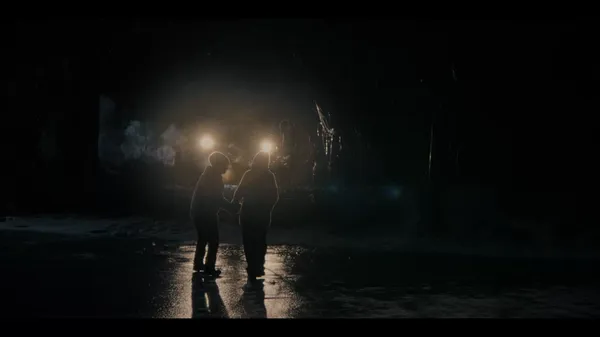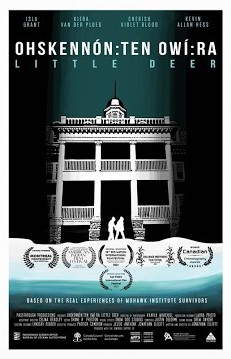Eye For Film >> Movies >> Little Deer (2023) Film Review
Little Deer
Reviewed by: Jennie Kermode

Across the 131 years that Canada’s residential school system sought to strip First Nations children of their culture and ‘civilise’ them in line with European values, there were between 20 and 90 active at any one time. Some had elaborate systems of walls and fences, but others were just big houses. Whilst runaways were hardly unheard of, one might still wonder why there were not more. The answer, of course, is that physical imprisonment wasn’t needed when the children were prisoners inside their own heads.
Jon Elliott’s beautifully presented short, which screened as a supporting feature at ImagineNative 2025, follows two girls who decide to run away from the Mohawk Institute Residential School (commonly known as the Mush Hole) in Brantford, Ontario. As we are informed when the film opens, this was the longest-running of all the schools in the system, with over 15,000 children from almost 70 indigenous communities forced to attend it between 1828 and 1970 (the last such institution closed in 1997). This is a fictional tale but it draws on the stories of survivors, and the specificity of it adds significantly to its power.

The girls in question are Sue (Kiera Van Der Ploeg) and Marie (Isla Grant), whom we also hear referred to by a resident reverend as ‘34’. Sue’s reason for running is pretty simple. She knows that she’ll be recaptured and she knows that she’ll be punished, but she’s willing to accept that if she can be with her mum for Christmas. For Marie it’s rather more complicated. She hasn’t heard from her runaway sister, Dawn (or ‘54’) for months, and doesn’t know if she’s still alive. Being the older sibling, and having been supposed to run then, too, she blames herself for the situation. She has obtained a small flame-haired doll which she hopes she can give to Dawn if she finds her at home.
We stay with the girls, the camera keeping us close, as they make their way through woodland that is heavy with snow, encounter wild deer, take a gamble on asking for help and face a perilous river crossing, the same comparatively warm weather that enabled them to travel without coats meaning that the ice is thin. In Elliott’s hands this is a terrifying thing to watch, especially as it has to be done at night, to reduce the risk of being spotted and caught.
Sue is confident to the point of swagger, clearly enjoying having someone to impress even as she complains about it; it’s the sort of attitude that adults know can get a kid in real trouble. Marie is timid, at one point experiencing a panic attack which is dizzyingly well realised through the camera. It’s telling that Sue knows what to do when this happens. It gradually becomes apparent, however, that freezing or drowning is not really the cause of her distress. She’s afraid that she has failed her sister, and that, as a consequence, she will be tortured for eternity in Hell.
Both young actors approach their characters with real delicacy and precision, giving them a complexity rarely found in shorts. Though the film is only half an hour long, it makes room for us to see something more of what the residential system does to people psychologically, and has done generationally, along with the impact of the secrecy it enforces, ripping families apart and leaving people with no idea how to contact their loved ones. All of this flows together naturally so that you will never feel as if you’re being lectured. Also managing to capture something of the character of Ontario in the Sixties, when it’s set, it’s an exquisite piece of short filmmaking, and deserving of a wide audience.
Reviewed on: 08 Jun 2025















